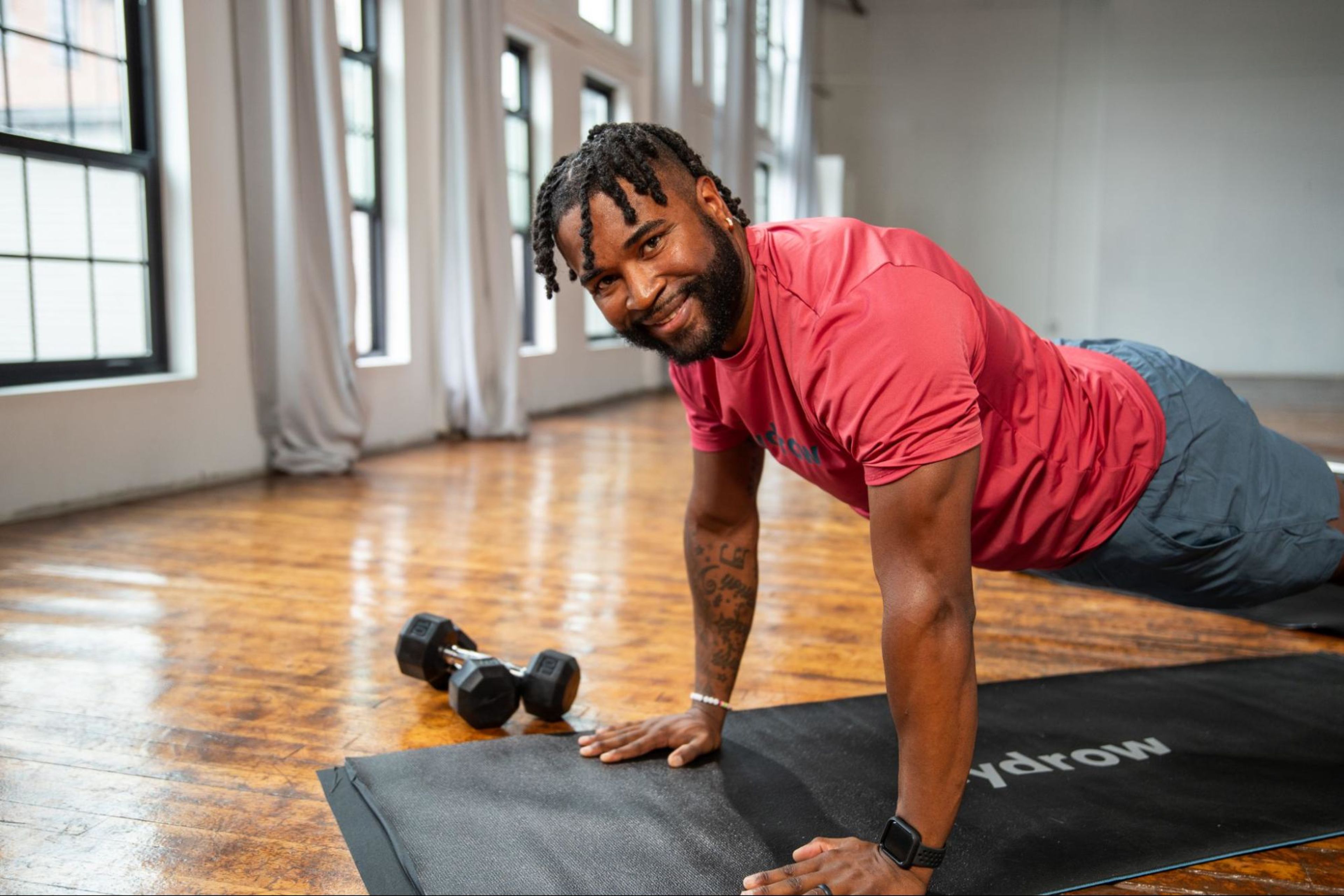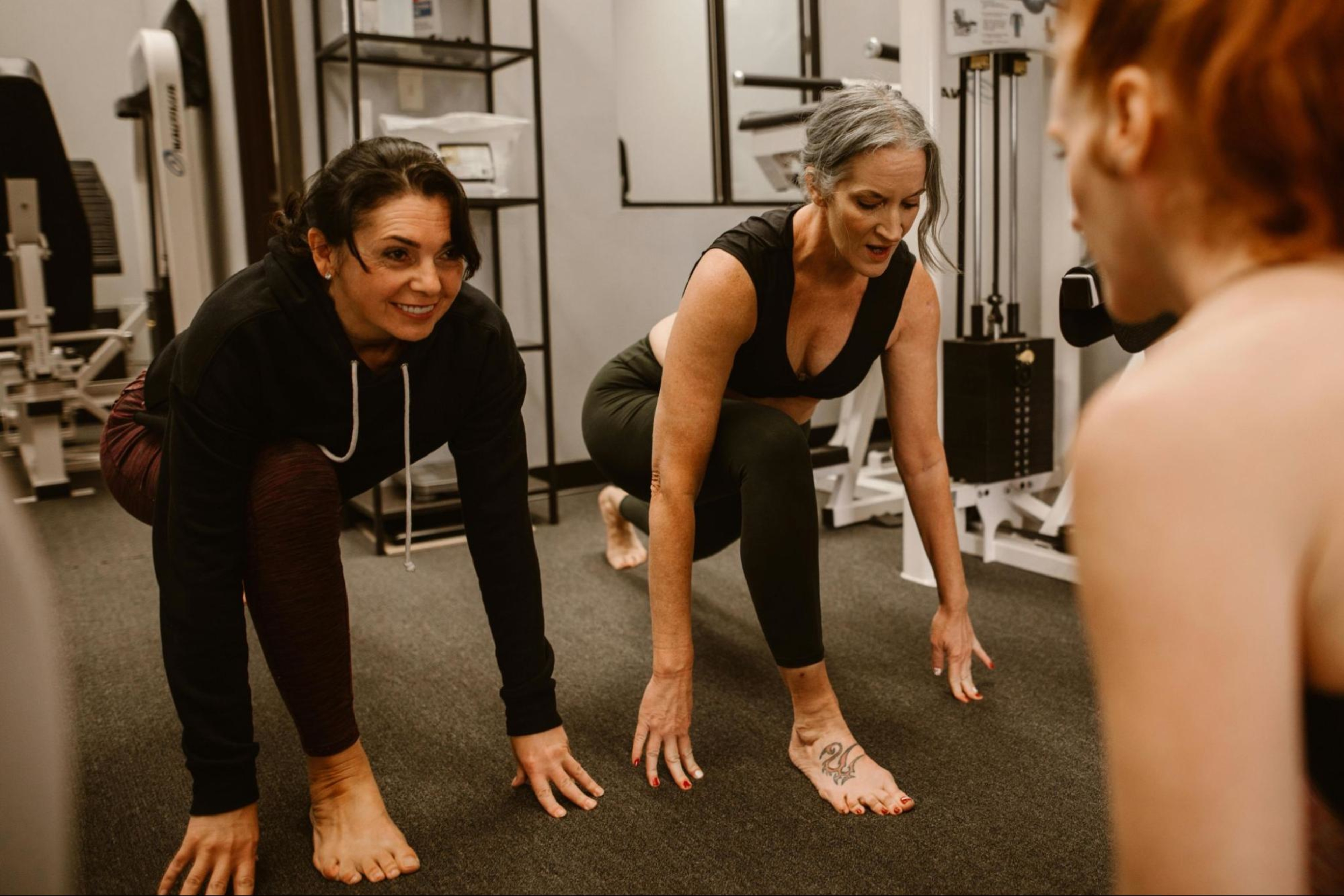What Is Strength Training?

Strength training is becoming increasingly popular, but for some, it can still feel like an intimidating mystery. You’ve likely heard that it’s great for building muscle, improving health, and enhancing overall fitness, but what does it really entail? And more importantly, how can you begin incorporating it into your routine?
If you’re new to strength training or looking to better understand what it involves, we’ll walk you through the basics of different types of strength training and how you can get started.
Let’s explore following topics together regarding strength training:
Let’s dive in!

Holiday savings are here
Bring home our award-winning rowers at the best prices of the year.
What is strength training?
Strength training is a type of workout that’s ultimately designed to improve muscle strength and muscular endurance by applying resistance to your muscles. This resistance can be harnessed in different forms, including weights, resistance bands, or even your own body weight. The goal is to challenge your muscles to adapt and grow stronger over time by causing microtears in your muscle fibers each time you exercise. In the end, your muscles will grow stronger and your overall performance and health will also improve.
While strength training does often involve lifting heavy weights, it’s not the only approach to successfully building muscle. Ultimately, it’s about progressively overloading your muscles to encourage growth and improve endurance. Whether you’re looking to tone, improve strength, or boost your metabolism, strength training can be a versatile solution.

Explore Hydrow's library of strength training workouts.
What are the benefits of strength training?
Incorporating strength training into your fitness routine offers a variety of benefits for both your physical and mental health, including:
Builds muscle and increases strength
Improves bone health
Boosts metabolism
Enhances joint flexibility and mobility
Improves mental health
1. Builds muscle and increases strength
One of the most obvious benefits of strength training is increased muscle mass and strength. As you progressively challenge your muscles with resistance, they adapt by becoming larger and stronger. Over time, your athletic performance will improve and you’ll notice a positive change in your body composition.
2. Improves bone health
Strength training puts stress on your bones, which encourages them to strengthen over time. This can reduce your risk of developing osteoporosis and other bone-related issues, especially as you age.
3. Boosts metabolism
Perhaps one of the more exciting benefits of strength training is the boost in your metabolism. As you develop more muscle, your body will burn more calories, even while you’re not working out. As a result, increasing your muscle mass makes it easier to maintain a healthy weight and burn fat.
While it shouldn’t encourage a reckless abandoning of proper nutrition, regular strength training does allow for more wiggle room in your daily caloric intake.
4. Enhances joint flexibility and mobility
Many strength training exercises involve moving through a full range of motion, which naturally improves joint flexibility and mobility. Consequently, you may lower the risk of injury and enhance your overall movement quality through consistent strength training.
5. Improves mental health
Strength training doesn’t just improve your physical well-being; it benefits your mental health, too! Studies show that resistance training can reduce symptoms of anxiety and depression while boosting self-esteem and cognitive function. Who doesn’t love feeling confident when looking in the mirror and observing all of your dedication to personal fitness?
Different types of strength training
Not all strength training is considered the same, and different methods can generate varying results depending on your goals. Moreover, the gym can be an intimidating place to start for beginners, so there are a number of excellent options to start your strength training journey at home without the fear of appearing lost.
Let’s check out some options for strength training:
Bodyweight training
Resistance band training
Free weight training
Machine-based training
Isometric training
1. Bodyweight training
Bodyweight exercises involve using your own body as resistance in order to build strength. Strength training without weights is highly accessible and totally doable at home since it requires no equipment. Examples include push-ups, squats, lunges, and planks. This method is great for beginners or those looking to improve functional strength.
2. Resistance band training
Resistance bands offer a lightweight, portable option for strength training. They’re also much more affordable than dumbbells and don’t require much space for storage. Resistance bands provide several levels of resistance, allowing you to perform exercises like banded squats, shoulder presses, and deadlifts. They’re excellent for those new to strength training or for adding variety to your routine.
3. Free weight training
This form of strength training involves using equipment like dumbbells, kettlebells, or barbells. It’s more along the lines of traditional weight lifting and helps you target specific muscles. Free weights can be adjusted easily for beginners or advanced athletes by simply choosing the most appropriate weight. Classic exercises involve bench presses, bicep curls, and squats.
4. Machine-based training
In gym settings, machine-based training uses specialized equipment to guide your movements and target specific muscle groups. Machines often provide a safer environment for beginners since they control your range of motion and allow you to easily adjust the desired resistance. They also reduce your risk for injury when performed properly.
5. Isometric training
Isometric exercises involve holding a position without moving, engaging your muscles through sustained contraction. Planks, wall sits, and static lunges are great examples of these exercises and help to build muscular endurance and core strength. These are also great for anyone who is looking to work out and build muscle at home.
Related blog: What Is Hybrid Strength Training?
Common types of strength training exercises for beginners
If you’re just getting started with strength training, check out these common types of exercises to include in your routine:
Squats
Push-ups
Deadlifts
Pull-ups
Planks
Lunges
1. Squats
Squats are a compound movement that target several muscle groups: legs, glutes, and core. Whether you’re using bodyweight, dumbbells, or a barbell, squats are a fundamental strength-building exercise. There are a variety of types of squats that will help to develop muscles within your legs and all of them will help build a more powerful core and hips.
2. Push-ups
Push-ups are a classic bodyweight exercise that target the chest, shoulders, triceps, and core. They can be easily modified for different fitness levels and are perfect for building upper body strength.
3. Deadlifts
Deadlifts engage nearly every major muscle group, including the hamstrings, glutes, back, and core. This compound movement helps improve posture and overall strength and can be performed with a variety of resistance tools, such as barbells, dumbbells, kettlebells, or resistance bands.
4. Pull-ups
They may look intimidating but pull-ups are a great upper-body exercise that target your back, shoulders, and arms. If you haven’t done a pull-up since middle-school gym class, you can start with assisted variations or resistance bands while you build up your stamina.
5. Planks
Planks are an isometric exercise that target the core, shoulders, and lower back. They’re excellent for building stability and endurance and can be performed as either a forearm plank or high plank for different levels of intensity.
6. Lunges
Lunges target the legs and glutes while also engaging the core. They’re great for improving lower-body strength and improving balance. You can do these easily at home with just your bodyweight or add intensity by holding dumbbells while you lunge.
How to get started with strength training
Getting started with strength training doesn’t have to be complicated or intimidating. Once you select a few exercises to start with, mastering those and increasing intensity will naturally follow. Here’s a quick guide to help you get started:
Set clear goals
Start with bodyweight exercises
Learn proper form
Incorporate compound movements
Follow a program
Gradually increase resistance
1. Set clear goals
Before diving into strength training, it’s important to identify your goals. Do you want to build muscle, burn fat, improve athletic performance, or simply get stronger? Your goals will decide which types of exercises and levels of intensity to focus on.
2. Start with bodyweight exercises
If you’re new to strength training, starting with bodyweight exercises like push-ups, squats, and lunges is a great way to build a foundation. Once you’ve mastered your bodyweight exercises, you can incorporate free weights or resistance bands for added intensity.
3. Learn proper form
Proper form is crucial for preventing injury and maximizing your efforts into results. Consider working with a qualified trainer or following instructional videos to ensure you’re correctly completing your exercises.
4. Incorporate compound movements
Compound movements like squats, deadlifts, and bench presses engage multiple muscle groups at once, making them more efficient for building overall strength. These exercises should form the core of your routine as you move forward.
5. Follow a program
Sticking to a structured program helps you stay consistent and track your progress, leading to more reliable results. Hydrow offers a variety of strength training workouts that cater to different fitness levels, so you can find a plan that works well for you!
Related blog: How Much Strength Training Should You Do Per Week?
6. Gradually increase resistance
As you become more comfortable with strength training, it’s important to progressively overload your muscles by increasing resistance or reps. This ensures you continue to make gains in strength and muscle mass.
Strength training myths
Despite its growing popularity, strength training does carry several myths in its notoriety. Let’s clear up some common misconceptions so you can start your strength training journey worry-free:
1. Myth: Strength training makes you bulky
One common misconception about lifting weights is that it will make you bulky. In reality, strength training helps you build lean muscle mass, improving your physique and boosting metabolism. Bulking up requires a specific combination of programmed training and nutrition that most casual strength trainers won’t achieve.
2. Myth: Cardio is better for fat loss
While cardio is effective for improving endurance, strength training plays a critical role in burning fat as well. As you build muscle, your body becomes more efficient at burning fat, even when at rest.
3. Myth: Strength training is only for young people
Strength training is beneficial for people of all ages. In fact, it’s particularly important for older adults to maintain muscle mass, improve bone density, and enhance overall health.
4. Myth: You need to lift heavy to see results
You don’t need to lift the heaviest weights to get stronger. What’s more important is consistency, proper form, and gradually increasing resistance over time. Even light weights or bodyweight exercises can be effective for building strength.
Let’s get to work!
Strength training is a powerful addition to any fitness routine, offering numerous benefits for both your physical and mental health. Whether you’re looking to build muscle, boost your metabolism, or improve your overall strength, adding resistance exercises into your workouts can make a huge difference. Remember, the key to success is consistency, safety, and enjoying the journey toward better health.
Looking for a way to incorporate more strength training into your exercise routine? Hydrow offers guided strength training workouts for every fitness level, all led by world-class Athletes who coach you through each movement and help you stay consistent. Additionally, our rowing workouts target 86% of your muscles with every stroke, delivering full-body training and real results.
Explore Hydrow’s strength workouts and see how far you can go.






